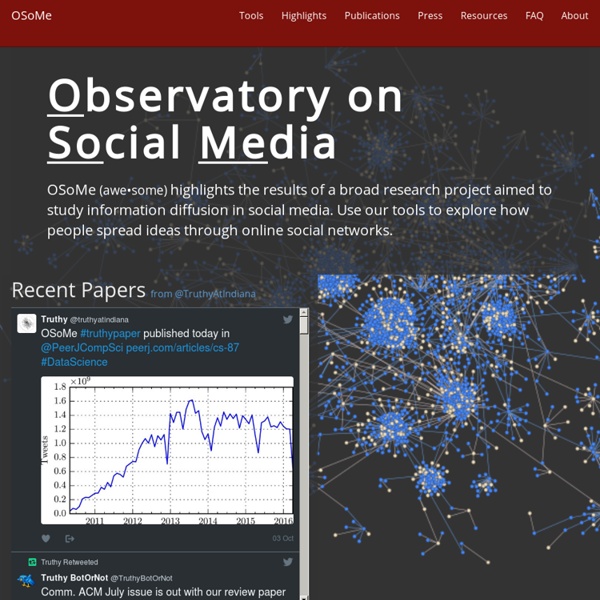



Map your moves Data This map distills more than 4000 moves from over 1700 people, collected in an informal survey by WNYC, a New York based public radio station. For generating the geo–coordinates from the entered ZIP codes, I used the free bulk geocoder at gpsvisualizer.com. Mapping As most moves occurred from, to or within the New York area, this area displayed enlarged in the white circle at the center of the graphic. Visual markers Each circle corresponds to one zip code area. Actually, it is consists of two overlaid circles: a red one for people moving out of the area, and a blue one for people moving to the area. Interaction Click one of the circles to inspect only moves to or from this area. Details On the right, you can find some statistics on why and when people moved to the selected areas. You can directly compare the lengths of the red (for people moving away from the selected areas) and blue (for people moving to the selected areas) bars to spot trends and peculiarities.
OneRiot.com – Realtime Search for the Realtime Web A few weeks ago, a small team from @WalmartLabs visited the offices of OneRiot in beautiful Boulder, Colorado. OneRiot has developed some pretty nifty technology that analyzes social media signals from popular networks like Twitter and Facebook to deliver ads that are relevant to consumers’ interests. As our teams debated the finer points of Big Data, Fast Data, and machine learning technologies, it became clear to us that we could find no better colleagues than the guys at OneRiot. As a part of Walmart, we're continuing to work with the intensity of a technology startup. As I have written before, here at @WalmartLabs we’re doing some amazingly interesting and impactful work at the intersection of social, mobile, and retail. It gives me great pleasure to welcome Tobias Peggs and the OneRiot team to @WalmartLabs!
How to use Chirpify Chirpify gives anyone the ability to participate in an advertisement, offer or live event - simply by including that campaign’s #actiontag in their post on Facebook, Twitter or Instagram. For example, let’s say a brand was running a campaign around #MovieAwards. They might offer a special VIP package to their fans & followers: All you have to do is post or reply back with a message that includes #buy #MovieAwards $50, and you’re in. Note - if it’s your first time using Chirpify, then you’ll get a message from us with a link to an Action Page where you can link your social account to a payment type and provide shipping information. And that’s all there is to it! A few FAQs Which payment options are supported? Using Chirpify, you can link any major Debit / Credit Card, ACH Bank Account or PayPal account to your social profile. How will a purchase via Chirpify appear on my Credit Card statement? Is paying by Chirpify secure? Absolutely. Who should I contact if I have questions about a payment?
Zhao Jing's homepage Mapping God's Bloodline Follow the genealogy of Jesus from the creation of Adam and Eve through Noah, the tribes of Israel, King David, and finally Joseph and Mary. Zoom out for a broader perspective or zoom in to examine finer details. I began with some key genealogical information found on complete-bible-genealogy.com and am working on adding more detail available at marshallgenalogy.org. First attempt at visualization I made this using a tool called Gephi which is great for deep analysis of complex networks, especially social connections. Floaters – families which can’t be connected back to Adam and Eve None of this is to say that spouses, mothers, and “floater” families are unimportant. Straight Layout In many ways this defeats my original goal, which was to reduce the wasted space caused by traditional forms.
Awesome Visualization of Social Media Usage Around the Globe [In Want to know how many people are microblogging in Australia? Or uploading photos online in Brazil? Or writing blogs in the Netherlands? TrendStream, who publishes the Global Web Index, has created a fantastic visualization that shows the penetration of different social technologies in major markets around the globe. "The massive impact of China: The vast Internet population coupled with hugely socially active set of web users, makes for a massive volume of content creators. Here’s the full map for your viewing pleasure (you'll want to blow it up to full screen): TwitLonger — When you talk too much for Twitter Living Networks - The Book